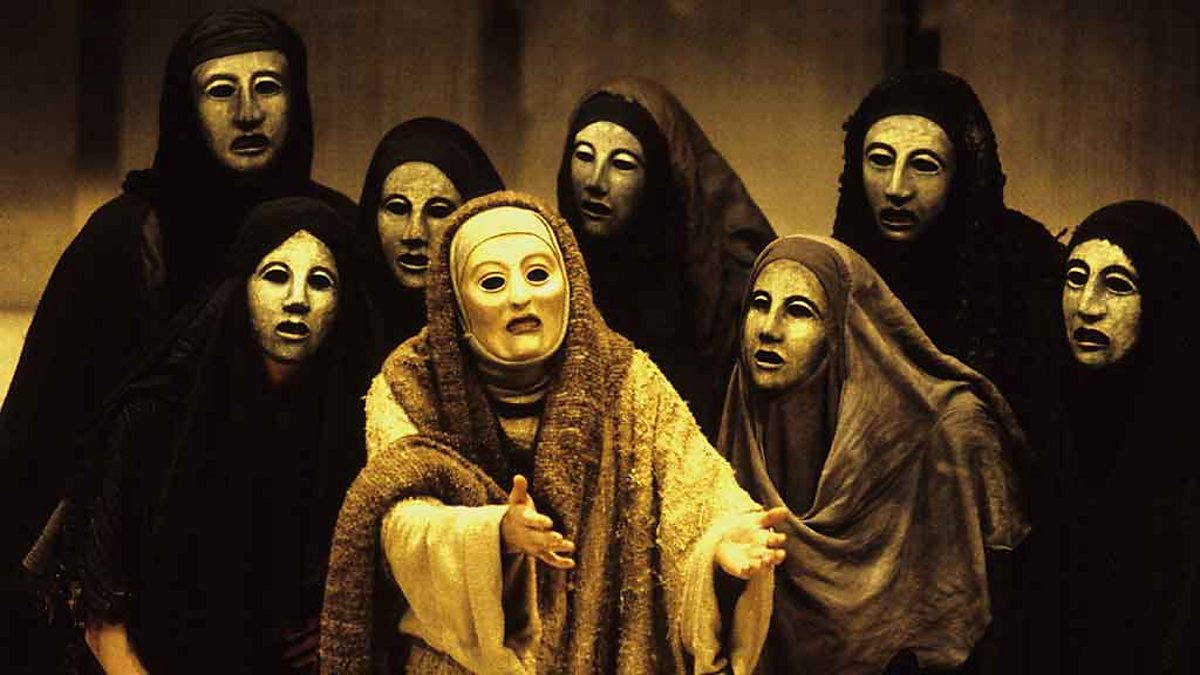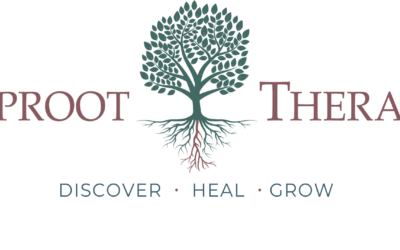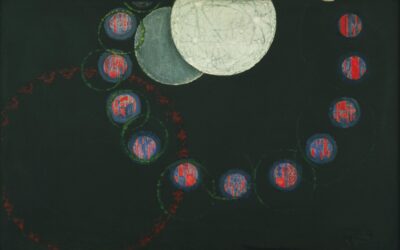What Happens in the Oresteia?

The Oresteia, a trilogy of Greek tragedies written by Aeschylus in the 5th century BCE, stands as a monumental work in the canon of Western literature. This epic cycle not only recounts the tragic tale of the House of Atreus but also serves as a profound exploration of justice, vengeance, and the evolution of societal values. At its core, the Oresteia grapples with the tension between intuition and reason, old and new, as embodied by the clash between the ancient Erinyes and the Olympian goddess Athena.
This essay aims to delve into the intricate layers of the Oresteia, examining how Greek myths, particularly those of Cassandra and Chiron, relate to the concept of intuition. We will explore how these mythological narratives resonate with modern studies on intuition in business settings, drawing parallels between ancient wisdom and contemporary findings. Furthermore, we will analyze the culminating court case in the Oresteia as a metaphor for Athens’ transition from archaic, blood-based justice to a new democratic order.
By examining the political developments in Athens, including the ambitious Parthenon building project, and considering Aeschylus’ own life and recurring themes in his work, we will contextualize the Oresteia within its historical and cultural milieu. We will also contrast the arrogance of Agamemnon with the values embodied by Orestes, highlighting the generational shift in ethical thinking. Finally, we will approach the trilogy from a depth psychology perspective, analyzing the archetypes at play on both individual and societal levels.
This comprehensive analysis will shed light on how this ancient trilogy continues to offer insights into the human condition, the nature of justice, and the ongoing struggle between intuition and reason in shaping societal values.
2. The Oresteia and Greek Myths
2.1 Overview of the Oresteia
The Oresteia consists of three plays: Agamemnon, The Libation Bearers, and The Eumenides. This trilogy traces the tragic fate of the House of Atreus, beginning with Agamemnon’s return from the Trojan War and his subsequent murder by his wife Clytemnestra, continuing with their son Orestes’ vengeance against his mother, and concluding with Orestes’ trial in Athens.
In “Agamemnon,” we witness the homecoming of the titular character, a victorious general, who is murdered by his wife Clytemnestra in retribution for sacrificing their daughter, Iphigenia. “The Libation Bearers” focuses on Orestes, who returns from exile to avenge his father’s death by killing his mother and her lover, Aegisthus. The final play, “The Eumenides,” deals with the consequences of Orestes’ matricide, as he is pursued by the Furies (Erinyes) and seeks judgment from Athena and a jury of Athenian citizens.
2.2 The myth of Cassandra
Cassandra, the Trojan princess gifted with prophecy but cursed to never be believed, plays a significant role in “Agamemnon.” Her character embodies the tragedy of unheeded intuition. Apollo granted Cassandra the gift of prophecy, but when she refused his romantic advances, he cursed her so that no one would believe her predictions.
In the play, Cassandra arrives in Argos as Agamemnon’s war prize. Despite her accurate predictions of doom, including her own death and that of Agamemnon, her warnings fall on deaf ears. The chorus and other characters dismiss her as mad or incomprehensible. Cassandra’s plight highlights the often-ignored power of intuitive knowledge and the tragic consequences that can result from dismissing such insights.
2.3 The myth of Chiron
While not directly featured in the Oresteia, the myth of Chiron, the wise centaur known for his knowledge and intuition, provides another perspective on the role of intuition in Greek mythology. Chiron was renowned for his wisdom, knowledge of medicine, and prophetic abilities. Unlike other centaurs, who were often depicted as wild and unruly, Chiron was civilized and served as a teacher to many Greek heroes, including Achilles, Jason, and Asclepius.
Chiron’s ability to mentor heroes and his deep understanding of nature and healing arts highlight the value placed on intuitive wisdom in Greek culture. His role as a bridge between the wild world of nature and the civilized world of humans mirrors the Oresteia’s exploration of the tension between primal instincts and reasoned justice.
3. Greek Myths and Intuition
Greek mythology is replete with instances where intuition plays a crucial role. The myths of Cassandra and Chiron, among others, demonstrate the complex relationship ancient Greeks had with the concept of intuitive knowledge. These stories often portray intuition as a double-edged sword – a powerful gift that can lead to profound insights but may also be dismissed or misunderstood by others.
In the Oresteia, intuition manifests in various forms. Cassandra’s prophetic visions, though accurate, are tragically ignored. The Chorus, representing the collective wisdom of Argos, often senses impending doom but fails to act decisively. Even Clytemnestra’s actions can be seen as driven by a dark, intuitive understanding of justice and vengeance.
The trilogy also explores the limitations of purely intuitive or emotional responses to events. The cycle of blood vengeance that drives the action of the first two plays is ultimately shown to be inadequate for maintaining social order. This sets the stage for the introduction of a more reasoned, institutional approach to justice in “The Eumenides.”
The tension between intuitive knowledge and reasoned judgment is central to the Oresteia’s exploration of justice and societal progress. As Athens moves towards a more democratic system, the play suggests that both forms of understanding have their place, but must be balanced and integrated for society to function harmoniously.
4. Modern Studies on Intuition in Business Settings
Contemporary research has begun to shed light on the role of intuition in decision-making processes, particularly in business environments. Studies have shown that individuals who rank higher in intuitive thinking on personality tests are often more accurate in their judgments but, paradoxically, less likely to be believed in business settings.
This phenomenon bears a striking resemblance to the tragic fate of Cassandra in Greek mythology. Just as Cassandra’s true prophecies were disbelieved, highly intuitive individuals in modern workplaces may find their insights overlooked or dismissed, despite their potential accuracy.
Research has indicated that intuitive decision-making can be particularly effective in complex, rapidly changing environments where analytical approaches may fall short. For instance, a study by Huang and Pearce (2015) found that venture capitalists who relied more on intuition than on quantitative data made more successful investment decisions, particularly in uncertain and ambiguous situations.
However, the bias towards data-driven, explicitly rational decision-making in many business cultures can lead to the undervaluation of intuitive insights. This preference for seemingly objective data mirrors the Athenian move towards a more structured, reason-based system of justice as depicted in the Oresteia.
Another study by Dane, Rockmann, and Pratt (2012) suggests that intuition can be more effective than analytical thinking in certain contexts, particularly when decision-makers have high domain expertise. This finding resonates with the Greek mythological tradition of valuing the intuitive wisdom of experienced figures like Chiron or the elders represented by the Chorus in Greek tragedies.
These findings suggest that there may be wisdom in ancient Greek perspectives on intuition that remains relevant in contemporary contexts. The challenge lies in finding ways to integrate intuitive thinking with analytical approaches to leverage the strengths of both – a balance that the Oresteia itself grapples with as it moves from the intuitive, emotion-driven justice of the Furies to the more reasoned approach of Athena’s court.
5. Intuition and Conflicting Values in the Oresteia
5.1 Application of intuition in the play
The Oresteia showcases various manifestations of intuition throughout its narrative. Beyond Cassandra’s prophetic abilities, we see characters grappling with gut feelings, premonitions, and instinctive reactions to events. Clytemnestra’s plotting against Agamemnon, Orestes’ internal conflict over matricide, and even the Chorus’ sense of foreboding all demonstrate different aspects of intuitive thinking.
Clytemnestra, in particular, embodies a dark form of intuitive justice. Her decision to murder Agamemnon is driven not just by vengeance for Iphigenia’s sacrifice, but by an intuitive sense that the cycle of violence must be addressed. However, her actions, based on personal and emotional motivations, ultimately perpetuate the cycle rather than breaking it.
Orestes, torn between the duty to avenge his father and the taboo against matricide, represents the conflict between intuitive moral obligations and reasoned ethical considerations. His struggle and eventual submission to Apollo’s oracle and later to Athena’s court show the transition from reliance on personal, intuitive notions of justice to acceptance of a more formalized, collective approach.
5.2 Conflicting values and their reflection of Athenian politics
The Oresteia vividly portrays a clash between two systems of justice and morality. On one side, we have the ancient law of blood vengeance, represented by the Erinyes (Furies). On the other, we have the emerging concept of civic justice, championed by Athena and the court of the Areopagus.
This conflict mirrors the political and social transitions occurring in Athens during Aeschylus’ time. The city-state was moving from older, more tribal forms of governance towards a democratic system. This shift brought with it new ideas about justice, citizenship, and the role of the state in mediating conflicts.
The old system, embodied by the Furies, relies on personal vendettas and family obligations. It is intuitive and emotional, rooted in ancient traditions and the primal fear of violating blood ties. The new system, represented by Athena’s court, introduces reasoned debate, collective decision-making, and the concept of civic responsibility over family loyalty.
The play’s exploration of these conflicting values serves as a reflection of the ongoing political discourse in Athens. It raises questions about the balance between traditional customs and innovative governance, between emotional responses to wrongdoing and more measured, institutionalized approaches to justice.
5.3 The Erinyes vs. Athena: A clash of eras and ideologies
The confrontation between the Erinyes and Athena in “The Eumenides” represents more than just a dramatic climax; it embodies a profound ideological and historical shift.
The Erinyes, also known as the Furies, are ancient chthonic deities predating the Olympian gods. They appear in Hesiod’s Theogony, one of the earliest works of Greek literature, suggesting their deep roots in Greek religious thought. The Erinyes represent a primal, instinctive form of justice based on blood ties and retribution. Their role is to punish oath-breakers and those who commit crimes against blood relatives, reflecting the values of a more agrarian, clan-based society where family bonds and personal vendettas took precedence over civic law.
Athena, on the other hand, is a younger Olympian goddess associated with wisdom, strategic warfare, and crafts. Her birth from Zeus’s head symbolizes reason and intellect. In the context of the Oresteia, Athena represents a more sophisticated, urbane approach to justice. She embodies the values of the emerging Athenian democracy: reasoned debate, civic responsibility, and the rule of law.
The clash between these two forces in the play mirrors the transition Athens was undergoing from older, more feudal values to a new democratic ethos. The Erinyes, with their insistence on blood vengeance, represent the old order that must be transcended. Athena, by establishing the court of the Areopagus and persuading the Erinyes to accept a new role as protectors of Athens, symbolizes the innovative spirit of the burgeoning democracy.
This conflict and its resolution in the play reflect Aeschylus’ vision of a society that doesn’t merely discard its old values but integrates them into a new, more complex system of justice. The transformation of the Erinyes into the Eumenides (“The Kindly Ones”) at the end of the trilogy suggests that the intuitive, emotional aspects of justice represented by these ancient goddesses still have a place in the new order, but one that is tempered by reason and civic responsibility.
6. The Culminating Court Case in the Oresteia
6.1 Abandoning old values
The trial of Orestes in “The Eumenides” marks a pivotal moment in the trilogy, symbolizing the transition from the old system of blood vengeance to a new order of civic justice. This abandonment of old values is not presented as a simple rejection of the past, but rather as a complex negotiation between tradition and innovation.
The Erinyes, pursuing Orestes for the murder of his mother, represent the old order. Their insistence on punishment for matricide, regardless of the circumstances, embodies a rigid, uncompromising form of justice. This system, while providing clear guidelines for behavior, leaves no room for nuance or context.
As the trial unfolds, we see the limitations of this old system. It cannot adequately address the complexities of Orestes’ situation – he killed his mother, yes, but he did so to avenge his father, who had been murdered by his mother. The old values, focused solely on the act of matricide, fail to account for the chain of events that led to this moment.
6.2 Embracing democracy
The establishment of the court of the Areopagus by Athena represents the embrace of a new, democratic approach to justice. This court, composed of Athenian citizens, introduces several key elements of democratic governance:
- Collective decision-making: Instead of justice being meted out by gods or individuals, it becomes the responsibility of a group of citizens.
- Reasoned debate: The court allows for arguments to be presented and considered, moving beyond the automatic application of predetermined rules.
- Voting: The final decision is made through a voting process, a cornerstone of democratic practice.
- Integration of divine and human elements: Athena’s participation alongside human jurors suggests a balance between reverence for tradition and the empowerment of citizens.
The resolution of the trial, with Orestes’ acquittal and the subsequent placation of the Erinyes, demonstrates how this new system can address complex moral issues while still respecting elements of the old order. The transformation of the Erinyes into protectors of Athens symbolizes how older, more instinctive forms of justice can be incorporated into the new civic structure.
This culmination of the Oresteia thus presents a vision of Athens leaving behind the “bloody values” of the past, not through outright rejection, but through a process of evolution and integration. It suggests that the path to a just society lies not in abandoning intuition and tradition entirely, but in balancing these elements with reason, debate, and collective decision-making – the hallmarks of Athenian democracy.
7. Political Developments in Athens
7.1 The Parthenon building project
The construction of the Parthenon, which began in 447 BCE, serves as a powerful symbol of Athens’ growing power, wealth, and cultural ambition during the time Aeschylus was writing. This monumental project, dedicated to the city’s patron goddess Athena, represented more than just architectural achievement; it was a bold statement of Athenian identity and values.
The Parthenon embodied the ideals of democracy, reason, and civic pride that were central to Athenian society. Its construction was a collective effort, funded by the treasury of the Delian League, which Athens controlled. This use of shared resources for a public monument reflects the democratic ethos of the time.
The artistic elements of the Parthenon, particularly its sculptural program, often depicted mythological scenes that reinforced Athenian values and history. These included the birth of Athena and her contest with Poseidon for patronage of the city, stories that emphasized wisdom, strategy, and civic virtue – themes that resonate strongly with the ideas presented in the Oresteia.
The Parthenon project also demonstrates the innovative spirit of Athens during this period. The architects Ictinus and Callicrates, along with the sculptor Phidias, employed cutting-edge techniques and subtle design elements to create a building of unparalleled harmony and beauty. This blend of tradition (in subject matter) and innovation (in execution) mirrors the themes of balancing old and new that we see in the Oresteia.
8. Aeschylus: Life and Themes
Aeschylus (c. 525-456 BCE) lived during a time of significant political and social change in Athens. He fought in the Persian Wars, experiencing firsthand the threat to Greek independence and the subsequent rise of Athens as a major power. This background deeply influenced his work, which often grapples with themes of justice, governance, and the relationship between gods and mortals.
Throughout his plays, Aeschylus consistently explores the tension between old and new, tradition and innovation. The Oresteia represents the culmination of this exploration, presenting a nuanced view of societal transition. Other recurring themes in his work include:
- The consequences of hubris: Many of Aeschylus’ characters suffer due to overreaching or defying the gods. In the Oresteia, we see this in Agamemnon’s arrogance upon his return from Troy.
- The cycle of violence: The idea that violence begets violence is central to the Oresteia and appears in other plays as well. The trilogy dramatizes how vengeance perpetuates a cycle of bloodshed until a new system of justice intervenes.
- The role of fate vs. personal responsibility: Aeschylus often presents characters struggling against, or coming to terms with, their destiny. Orestes, in particular, grapples with the seeming inevitability of his actions and their consequences.
- The importance of justice and civil order: Reflecting the political developments of his time, Aeschylus frequently emphasizes the need for just governance and social harmony. The establishment of the Areopagus in “The Eumenides” is a prime example of this theme.
- The complex relationship between mortals and gods: His plays often feature divine intervention in human affairs, exploring the boundaries between human and divine law. In the Oresteia, we see this in Apollo’s command to Orestes and Athena’s role in establishing the new court.
Aeschylus’ own life experience as a soldier and citizen of a rapidly changing Athens infuses his work with a deep understanding of conflict, both external and internal. The Oresteia, in particular, can be seen as his attempt to reconcile the violent past with hopes for a more just and ordered future.
9. Contrasting Agamemnon and Orestes: Arrogance vs. Growth
9.1 Agamemnon’s Arrogance
Agamemnon, as portrayed in the first play of the trilogy, embodies the hubris that often leads to downfall in Greek tragedy. His arrogance is manifested in several key ways:
- The sacrifice of Iphigenia: Agamemnon’s decision to sacrifice his daughter to appease Artemis and gain favorable winds for his fleet demonstrates a willingness to place personal ambition and military success above familial bonds.
- The Trojan War: His decade-long pursuit of the war, while ostensibly for his brother’s honor, can be seen as an exercise in personal glory and expansionism.
- The red carpet scene: Upon his return, Agamemnon’s initial reluctance to walk on the purple tapestries laid out by Clytemnestra, followed by his acquiescence, reveals both his awareness of potential hubris and his ultimate submission to it.
- Treatment of Cassandra: His bringing of Cassandra as a war prize, with little regard for her prophetic abilities or her own wishes, further illustrates his arrogance and sense of entitlement.
Agamemnon’s character represents the old order of heroic values, where personal glory and martial success are paramount, often at the cost of more humane considerations.
9.2 Orestes’ Values and Growth
In contrast, Orestes’ journey through the trilogy represents a more complex moral development:
- Filial duty: Initially, Orestes is driven by the traditional obligation to avenge his father, showing adherence to old values.
- Moral conflict: Unlike Agamemnon, Orestes experiences deep moral anguish over the act of matricide, demonstrating a more nuanced ethical awareness.
- Seeking judgment: Orestes’ willingness to submit to judgment, first by Apollo and then by the court of the Areopagus, shows a respect for higher authorities and a desire for objective justice.
- Acceptance of new order: By participating in the new legal process established by Athena, Orestes embraces a more civilized and democratic approach to conflict resolution.
Orestes’ character arc demonstrates a transition from the old system of blood vengeance to a new order of civic justice. His growth reflects the broader societal shift that Aeschylus envisions for Athens.
9.3 Implications of the Contrast
The contrast between Agamemnon and Orestes serves multiple purposes in the trilogy:
- Generational change: It highlights the evolution from one generation to the next, symbolizing broader societal transformations.
- Ethical development: The move from Agamemnon’s relatively straightforward adherence to heroic codes to Orestes’ more complex moral reasoning reflects a sophistication in ethical thinking.
- Political allegory: Agamemnon can be seen as representing older, more autocratic forms of rule, while Orestes’ story aligns with the development of democratic institutions in Athens.
- Tragedy vs. Resolution: While Agamemnon’s arrogance leads to cyclical violence, Orestes’ willingness to submit to new forms of justice paves the way for resolution and social harmony.
10. Archetypes and Depth Psychology in the Oresteia
Analyzing the Oresteia from a depth psychology perspective reveals rich layers of archetypal symbolism operating on both micro (individual) and macro (societal) levels.
10.1 Micro Level: Individual Archetypes
- The Hero (Orestes): Represents the individual’s journey towards self-realization and moral development. Orestes’ trials and ultimate vindication mirror the process of individuation described by Jung.
- The Great Mother (Clytemnestra): Embodies both nurturing and destructive aspects of the maternal archetype. Her actions represent the ambivalence often associated with the mother in depth psychology.
- The Wise Old Man (Apollo/Athena): These deities serve as guide figures, representing intuition, wisdom, and the potential for transformation.
- The Shadow (The Furies): Represent the dark, instinctual aspects of the psyche that must be confronted and integrated rather than merely repressed.
- The Anima (Electra): As Orestes’ sister and co-conspirator, Electra can be seen as representing Orestes’ anima, the feminine aspect of the male psyche.
10.2 Macro Level: Societal Archetypes
- The Great Father (Agamemnon): Represents traditional patriarchal authority and old societal orders.
- The Transformation (The Trial): The establishment of the Areopagus represents the societal individuation process, integrating opposing forces into a new synthesis.
- The Scapegoat (Iphigenia): Her sacrifice represents the collective shadow, the aspects of society that are suppressed or sacrificed in pursuit of perceived greater goods.
- The Rebirth (Athens): The resolution of the trilogy suggests a rebirth of Athenian society, incorporating elements of the old order into a new, more balanced system.
10.3 Archetypal Tensions and Resolutions
The interplay of these archetypes in the Oresteia reflects both individual and collective psychological processes:
- Integration of the Shadow: The transformation of the Furies into the Eumenides represents the integration of primitive, instinctual forces into the civilized order, rather than their mere repression.
- Anima/Animus Development: The interactions between male and female characters (Orestes/Electra, Orestes/Athena) suggest the development of the contra-sexual aspects of the psyche.
- Individuation and Collective Consciousness: Orestes’ journey mirrors the individuation process on a personal level, while the establishment of the new justice system represents a similar process for Athenian society as a whole.
- Transcendent Function: The resolution of the trilogy, mediated by Athena, can be seen as an expression of Jung’s transcendent function, where opposing psychic forces are united in a new, higher-order synthesis.
By viewing the Oresteia through this depth psychological lens, we gain insight into how the play operates on multiple levels simultaneously, addressing both individual psychological development and broader societal transformations. The archetypes and their interactions provide a framework for understanding the deep psychological resonances that have allowed this ancient trilogy to remain relevant and powerful across millennia.
11. Legacy of the Oresteia
The Oresteia stands as a monumental work that bridges myth, politics, and psychology. Through its exploration of intuition, justice, and societal change, it offers insights that remain relevant in our modern world. The trilogy’s treatment of the tension between old and new values, intuitive understanding and reasoned judgment, reflects not only the political discourse of ancient Athens but also ongoing debates in contemporary society.
From the tragic figure of Cassandra, whose intuitive knowledge goes unheeded, to the establishment of a new form of justice in the court of the Areopagus, the Oresteia grapples with fundamental questions about how societies evolve and how they balance competing values and ways of knowing. The parallels between the challenges faced by characters in the play and those revealed by modern studies on intuition in business settings underscore the enduring nature of these themes.
The contrast between Agamemnon’s arrogance and Orestes’ moral growth provides a powerful illustration of the trilogy’s central themes. It demonstrates the potential for positive change, both on an individual and societal level, when old values are critically examined and integrated into new systems of thought and governance.
Furthermore, the archetypal analysis reveals the deep psychological currents running through the trilogy. By operating simultaneously on individual and collective levels, the Oresteia speaks to both personal and societal transformation. The integration of shadow elements, the development of a more balanced psyche, and the movement towards a higher synthesis of opposing forces are processes that resonate not only in ancient myth but in our ongoing psychological and social development.
Ultimately, the Oresteia offers more than just a retelling of ancient myths or a snapshot of Athenian politics. It presents a nuanced exploration of how societies can move from cycles of violence and retribution towards systems of justice and civic harmony. In doing so, it suggests that true progress comes not from simply discarding the past, but from integrating older, intuitive forms of knowledge with newer, more rational approaches. This balance, achieved through struggle and negotiation, points the way towards a more mature, thoughtful, and just society – a message that remains as relevant today as it was in Aeschylus’ time.
Classical Literature
Iphigenia in Aulis
Greek Tragedies Influence on Jung
The Psychology of the Peloponesian War





0 Comments